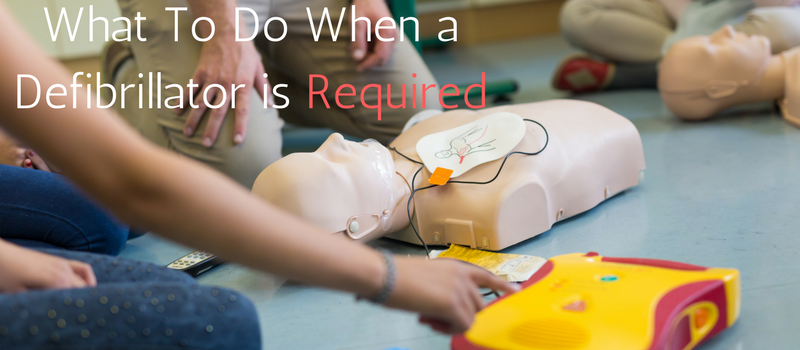What To Do When a Defibrillator is Required: Introduction
In a very serious situation, such as a Sudden Cardiac Arrest, every second is vital for the survival of the victim. Knowing what to do in these situations could be the difference between life and death.
Keep Calm and Call Emergency Services
For the best chance of survival, there needs to be at least two people who respond to a cardiac arrest. One needs to perform CPR immediately and the other needs to call for an ambulance. An ambulance is needed even if first aid trained people respond to the cardiac arrest. This is because the medical services will need to provide post treatment care and determine the cause of the cardiac arrest.
Fast Response Makes All the Difference
Performing CPR is a hard task, continuing it until a defibrillator is ready is a lot of pressure for anyone. Although maintaining the same rhythm and compressions is challenging, it is imperative for survival. The recommended beats per minute for CPR is 100BPM. The 1977 hit by the Bee Gees ‘Stayin’ Alive’ has a rhythm of 103BPM so think of that song when performing CPR and you will have roughly the correct rhythm to perform CPR.
Prepare the Defibrillator ASAP
As soon as the call to the emergency services is finished, the defibrillator will need to be ready to be used as soon as possible. The defibrillator used will almost certainly be an AED (Automated External Defibrillator). This type of defibrillator detects the irregular beat of the heart and can administer the shock too without user input, if it is a fully automatic AED that is. A semi-automatic AED requires the user to push a button to deliver the shock.
Getting the AED ready will be a race against time and CPR should continue up until the defibrillator is ready to be used. Preparing the defibrillator to be used does not require knowledge on how to use it. This is because AEDs on the market today have built-in visual and audio instructions to guide the user. However, training is recommended to learn the processes of what to do in a high pressure situation. It’s not so much learning how to use a defibrillator but how to use one when you need to.
The training that will teach CPR as well as how to use a defibrillator will ensure that the person having a Sudden Cardiac Arrest has the best chance of survival.
To use the defibrillator, the CPR will have to stop. The time between this and using the defibrillator is important for the victim. Using the defibrillator should be as simple as following the instructions of the AED itself.
Aftershock
Once the defibrillator has been used there should hopefully be a response. If the defibrillation attempt has worked then you need to continue to care for the person until the ambulance arrives.
Once the ambulance arrives and the paramedics are with you, the experts can take over. In this situation, whoever administered first aid should be proud of their quick and correct response.
Back
